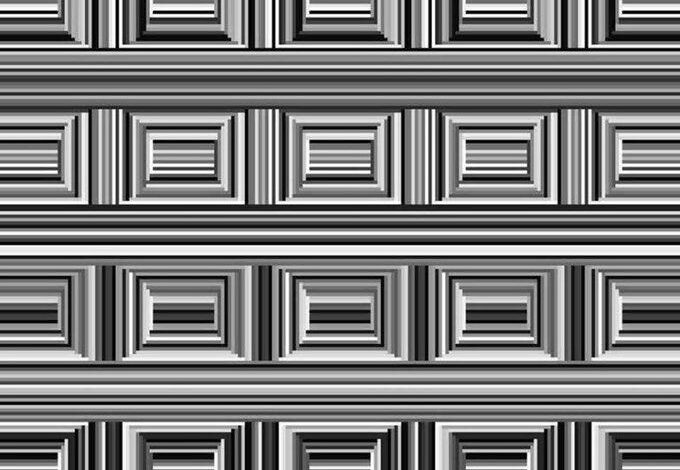The Coffer Illusion | Decoding Optical Illusions and Their Potential Benefits

Optical illusions have long fascinated and puzzled us, revealing the complex interplay between our visual system and the brain’s interpretation of what we see. Among the myriad of illusions that captivate both scientists and the general public is the Coffer Illusion. At first glance, it may seem like a simple geometric pattern, but a closer inspection reveals much more. In this article, we will delve into the Coffer Illusion, explore the science behind optical illusions, and discuss their potential benefits in various fields.
What is the Coffer Illusion?
The Coffer Illusion is a visual phenomenon where a pattern of rectangles and circles creates an ambiguous perception. Initially, most people see a series of rectangular panels resembling coffers or recessed ceilings. However, after a moment of observation, many begin to see circles hidden within the grid. The shift from seeing rectangles to circles and vice versa is what makes the Coffer Illusion particularly intriguing.
This illusion was created by Anthony Norcia, a vision scientist at the Smith-Kettlewell Eye Research Institute. The Coffer Illusion plays with our brain’s tendency to group elements into familiar shapes based on patterns and proximity. In this case, the rectangles are more prominent at first because they align with our expectations of regular shapes, but the circles become apparent once our brain adjusts its focus.
The Science Behind Optical Illusions
Optical illusions, including the Coffer Illusion, occur due to the brain’s interpretation of visual information. Our eyes capture light and convert it into electrical signals that are sent to the brain. The brain then processes these signals to create a coherent image of the world around us. However, this process is not infallible. The brain often relies on shortcuts or assumptions, leading to the misinterpretation of visual cues.
There are several types of optical illusions, each exploiting different aspects of visual perception:
- Literal Illusions: These illusions create images that are different from the objects that make them up. For example, a picture might look like a face from afar, but up close, it’s made of fruits or other objects.
- Physiological Illusions: These illusions are caused by the overstimulation of the eyes or brain. A common example is the afterimage effect, where staring at a bright image for a long time causes a ghostly image to remain even after looking away.
- Cognitive Illusions: These involve higher-level cognitive processes and are the most complex. The Coffer Illusion falls into this category, as it involves the brain’s interpretation of shapes and patterns.
Decoding the Coffer Illusion
The Coffer Illusion is a prime example of how cognitive illusions challenge our perception. It exploits the brain’s tendency to group objects based on Gestalt principles, particularly the principles of proximity and closure. Gestalt psychology suggests that our brains prefer to see whole figures rather than disconnected fragments. In the Coffer Illusion, the rectangular panels are immediately perceived as a coherent whole, overshadowing the circles hidden within them.
When you first look at the Coffer Illusion, your brain prioritizes the rectangles because they fit a more familiar and expected pattern. However, with some effort, you can “unlock” the circles hidden within the design. This shift in perception highlights the brain’s flexibility and the importance of context in visual processing.
The Benefits of Studying Optical Illusions
Optical illusions like the Coffer Illusion are more than just curiosities; they offer valuable insights into the workings of the human brain. Here are some of the potential benefits of studying these phenomena:
1. Advancing Neuroscience and Psychology
Optical illusions provide a window into the brain’s processes, revealing how we perceive the world. By studying illusions, researchers can better understand the neural mechanisms involved in visual perception, attention, and cognition. This knowledge can contribute to advancements in neuroscience, psychology, and even artificial intelligence, where understanding human perception can improve machine learning algorithms.
2. Enhancing Visual Communication and Design
Designers and artists can use optical illusions to create more engaging and effective visual communication. By understanding how the brain interprets visual information, they can craft designs that capture attention, convey messages more clearly, and even manipulate perception for creative effects. The Coffer Illusion, for example, demonstrates how subtle changes in design can lead to vastly different interpretations.
3. Improving Cognitive Training and Therapy
Optical illusions can be used in cognitive training exercises to improve visual processing and attention. For example, puzzles and games that involve identifying hidden shapes or patterns, like those in the Coffer Illusion, can help sharpen the brain’s ability to process visual information. In therapeutic settings, illusions can be used to help patients with visual or cognitive impairments retrain their brains to see the world more accurately.
4. Developing Diagnostic Tools
The way a person perceives optical illusions can sometimes reveal underlying neurological conditions. For example, certain visual illusions might be perceived differently by individuals with schizophrenia or other mental health disorders. By studying these differences, researchers can develop diagnostic tools that help identify and monitor these conditions.
The Fascination with Optical Illusions
Our fascination with optical illusions stems from their ability to challenge our understanding of reality. They remind us that what we see is not always what is actually there and that our brains play a crucial role in shaping our perception of the world. The Coffer Illusion, with its shifting patterns and hidden shapes, is a perfect example of how something as simple as a visual pattern can lead to profound insights into the workings of the mind.
Conclusion
The Coffer Illusion is more than just a visual trick; it is a testament to the complexity of human perception. By studying such illusions, we can unlock new knowledge about how our brains process visual information, leading to potential benefits in fields ranging from neuroscience to design. As we continue to explore the world of optical illusions, we are reminded of the intricate and often mysterious nature of our own minds, and the incredible ways in which they interpret the world around us.




